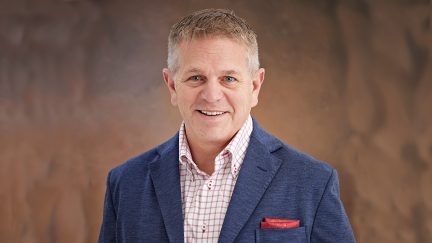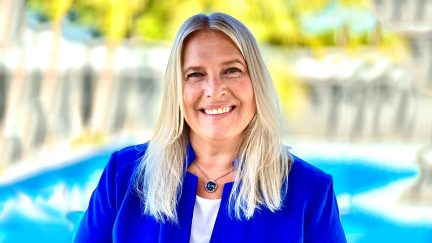Never miss a story — sign up for PLANADVISER newsletters to keep up on the latest retirement plan adviser news.
Moving the Needle on DEI in Financial Services
The lack of diversity within the financial services industry has repercussions on marginalized communities, in part because the fee-based nature of services can perpetuate the industry’s homogeneity, both within firms and among clients being served, according to experts.
However, amidst these challenges, there is growing optimism among DEI experts and practitioners that change is possible. New ideas such as reconsidering minimum fee thresholds for clients, staffing diverse teams to match an increasingly diverse client pool and proactively recruiting among diverse communities are all starting to be considered as ways to combat homogeneity and a “good-old-boys” network in finance.
The Wealth Gap
“When you go to conferences that are mainly adviser-driven, they’re still pretty homogenous, unless they’re aggregating around a topic like diversity,” says Laura Stamps, head of DEI engagement strategy for Financial Finesse.
She says wealth management is largely a business of networks, in which people with money try to get other people with money to invest. Given the current wealth gaps—by race, by gender, by sexual orientation—advisers from those communities will, in turn, have a smaller pool to work with.
“There are people that come into this business still building books, starting off in very low salaries,” Stamps says. “Some communities can’t afford to live on such a low wage level after they’re educated, because perhaps there are other households they might be responsible for.”
The racial wealth gap plays a large role in why wealth management is not as diverse as it could be, she notes. The more work done to mitigate these gaps through financial well-being and intentional strategies to remove barriers to wealth-building, the more hopeful Stamps says she will be that change will happen.
Preston Duppins Jr., a senior partner in Vilardi Wealth Management at the Association of African-American Financial Advisors, says adviser firms often have an asset minimum—say, $100,000—and if a client does not meet it, that client will be sent to a call center.
“As an African American, if I’m going into my community that has 10 times less wealth than other people and I don’t accept lower minimums, I’m not serving my community,” Duppins says. “Someone from my community might have $80,000, and they’re the first generation to even work with an adviser.”
He says if his company is not allowing him to bring on smaller dollar amounts, he could be ostracizing his own people. A lower minimum, he says, is an option to serve groups without generational wealth.
People Aren’t a Monolith
Duppins notes that individuals of any race cannot be painted with the same brush, so financial advisories need to consider ways to serve all types of clients.
When asked if an identify-specific firm, such as a firm staffed with Black employees serving Black clients, could help address the situation, Duppins says that may not be the right answer either, as it will then exclude other groups.
“It’s been proven that diverse organizations tend to perform better,” he says. “I think the world is changing.”
Stamps agrees that many more multicultural families do not fit into a single category. If money management is a familial endeavor, it would make sense, she notes, that firms reflect what families look like as well.
“People are not a monolith,” she says. “People aren’t necessarily going to be served well just because an adviser looks like them. There’s a higher probability that maybe an adviser can understand them culturally, but there’s also so much nuance within the culture that: maybe not.”
Recruitment
Recruiting employees is a concrete way for a firm to increase diversity, says Carina Diamond, CEO and founder of Stella Secunda Partners and director of Diversitas at the University of Akron. She encourages advisers to develop a relationship with local colleges and universities.
“Pick a school nearby, and even if they don’t have financial planning or personal finance, other majors can be great too,” she suggests. “Once you get that relationship, you can start to give back, set up a scholarship, mentor the students, help with a career day. You’re going to get those phone calls from those professors who say, ‘Hey, I’ve got this superstar woman in here, and I think she’d be a great fit at your firm.’”
Morgan Stanley’s Duppins agrees there must be overt action taken by financial organizations, as the industry is still “a good-old-boy network.” A business owner hiring someone to take over might think clients will abandon the firm if their successor is of a different nationality, has different political beliefs or is part of the LGBTQ+ community, he says, and they therefore recruit people like themselves.
“My son’s coming into the space, but there are very few people like me, and not every son is going to want to follow his father’s footsteps,” he says. “I think there has to be a tangible program in place to make sure firms are going to [historically Black colleges and universities] and explaining to people the opportunities in this space. That’s what I do. I talk [to every] young person that’s in college in finance.”
Recruiting diverse talent will help those from underserved communities. Duppins says there are funding opportunities he has been able to give clients that his white counterparts probably would not have been able to provide. He talks about a client, of Cuban descent, who used his own money to fund his business until Duppins told him about the Black Business Investment Corp., which helped him secure funding.
“Regardless of how you feel in your heart about DEI, you have to acknowledge that there’s a business case: We have to expand the labor pool,” Diamond says. “Frankly, as a profession, we need to look like more like our audience, which is increasingly diverse.”
You Might Also Like:

ESG Goals Still Prevalent in Executive Incentive Plans, WTW Reports

How Advisories Can Build Better, More Inclusive Cultures






